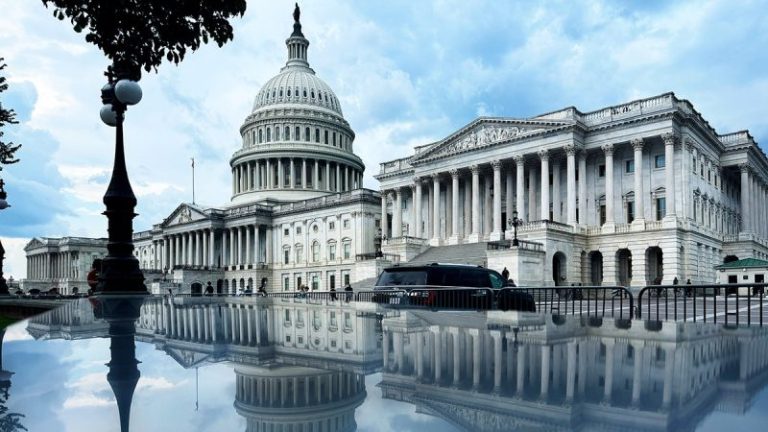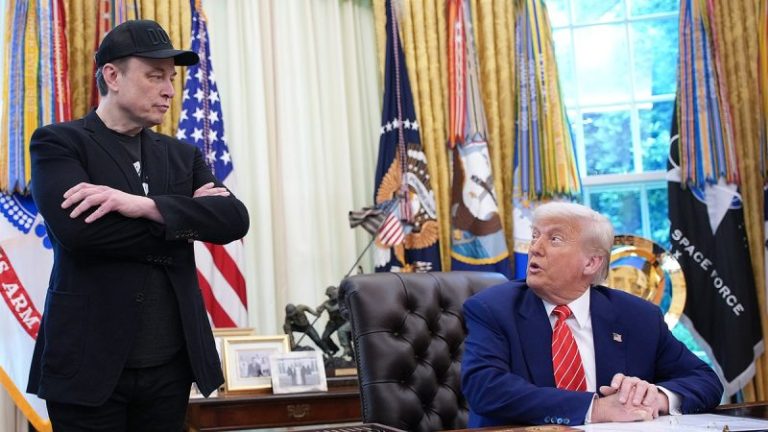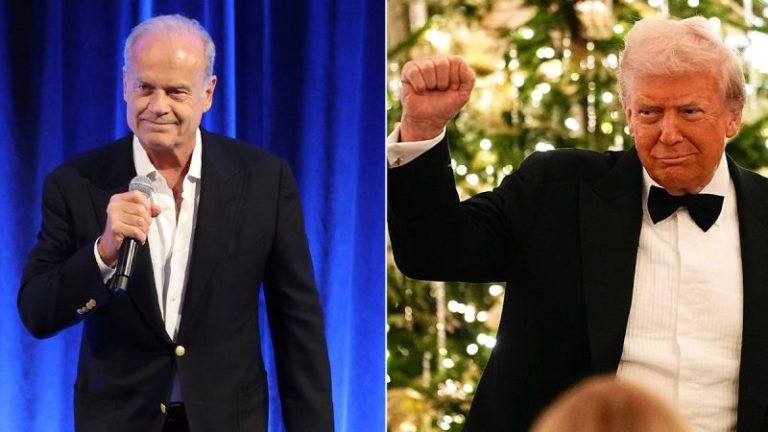Statistics Canada released November’s job data on Friday (December 5). The numbers show the Canadian economy added 54,000 jobs over the month, with gains largely coming from part-time work. The increase surprised analysts, who had been expecting losses, and marked the third consecutive month of gains for a total of 181,000 new jobs since the start of September.
Headlining the data were increases of 46,000 health care and social service workers, 14,000 new employees in accommodation and food services, and 11,000 new jobs in the natural resources sector. However, gains were offset by 34,000 fewer workers in the wholesale and retail trade.
Overall, the increase pushed the employment rate up by 0.1 percentage points to 60.9 percent and lowered the unemployment rate by 0.4 percentage points to 6.5 percent.
The release is the last major economic news on the calendar before the Bank of Canada (BoC) Board of Governors meets December 10 to make its final interest rate decision of 2025.
Economists are predicting that the BoC will hold rates steady until 2027.
The first Friday of the month is also typically the release date for the US Bureau of Labor Statistics’ own jobs report; however, due to the lengthy government shutdown, the agency noted in the September release issued on November 20 that October’s data would be rolled in with November’s and its release would be delayed until December 16.
However, a report from payroll firm ADP on Wednesday (December 3) indicated that its records show the US private sector employment shed 32,000 jobs in November, with weak hiring in the manufacturing, professional services, information and construction sectors, which was partially offset by an 8,000 job gain in the mining sector.
The release shows that job growth in the US has stalled and without the release of official government data may be the last important indicator ahead of the Federal Open Market Committee meeting set for December 9 and 10.
Given the news of a weak labor market, US analysts are predicting the Fed will make another 25 basis point cut, which would lower the Federal Funds Rate to the 3.5 to 3.75 percent range.
The expectations of cuts provided tailwinds for precious metals prices ahead of the central bank’s meeting, with the gold price trading up 1.03 percent on the week at US$4,200.53 on Friday at 4 PM EST, and the silver price up a massive 9.43 percent at US$58.42 after setting a new all-time high of US$59.28 per ounce during morning trading on Friday.
For more on what’s moving markets this week, check out our top market news round-up.
Markets and commodities react
Canadian equity markets posted modest gains this week.
The S&P/TSX Composite Index (INDEXTSI:OSPTX) gained 0.25 percent over the week to close Friday at 31,311.41.
Meanwhile, the S&P/TSX Venture Composite Index (INDEXTSI:JX) rose 1.04 percent to 939.76, and the CSE Composite Index (CSE:CSECOMP) increased 4.1 percent to close at 155.40.
In base metals, the COMEX copper price ended the week up 2.83 percent at US$5.45 per pound.
The S&P Goldman Sachs Commodities Index (INDEXSP:SPGSCI) gained 2.74 percent to end Friday at 564.72.
Top Canadian mining stocks this week
How did mining stocks perform against this backdrop?
Take a look at this week’s five best-performing Canadian mining stocks below.
Stocks data for this article was retrieved at 4:00 p.m. EST on Friday using TradingView’s stock screener. Only companies trading on the TSX, TSXV and CSE with market caps greater than C$10 million are included. Mineral companies within the non-energy minerals, energy minerals, process industry and producer manufacturing sectors were considered.
1. Bayhorse Silver (TSXV:BHS)
Weekly gain: 73.33 percent
Market cap: C$31.13 million
Share price: C$0.13
Bayhorse Silver is a silver-focused company currently working to bring the Bayhorse silver, copper and antimony mine in Oregon, US, back online.
The mine was originally in operation until late 1984 and closed when the price of silver dropped to under US$6 per ounce. Historic sampling during the 1980s identified grades of 2,146 grams per metric ton (g/t) silver, and a bulk sampling program conducted by Bayhorse in 2014 found bonanza grades of 150,370 g/t silver.
The company has continued to explore the property and, in October 2018, produced a maiden resource estimate that showed the property hosts inferred resources of 6.33 million ounces of silver from 292,300 US tons of ore with an average grade of 21.65 ounces per US ton.
Bayhorse anticipates receiving complete operating permits for the mine in mid-2026 and achieving full production in 2027.
Although the company did not release news this week, shares surged alongside the silver price, reaching new all-time highs.
2. Omineca Mining and Metals (TSXV:OMM)
Weekly gain: 72.73 percent
Market cap: C$14.42 million
Share price: C$0.095
Omineca Mining and Metals is a gold exploration and mining company working to advance its Wingdam project in British Columbia, Canada.
The project, a 50/50 joint venture with D&L Mining, consists of 61,329 hectares of hard rock and placer claims within the Cariboo mining district. The site currently hosts mining operations focused on extracting placer gold from gravels 50 meters beneath Lightning Creek.
According to the company, the mine is extracted through gravity separation, which uses an existing reusable water supply without chemicals, mill waste or tailings.
On Thursday (December 4) the company announced it had mobilized for an eight-hole, 4,000 meter, winter drill program at Wingdam. Exploration will focus on following up on mineralization discovered during the 2024 program and at depths below the Wingdam underground placer workings.
The company stated that drilling will continue until the end of December and that results will be released early in 2026.
Shares surged after Omineca’s Friday news that it restarted underground placer gold recovery at the site, with gold recovered via the company’s water wash plant and shaker table.
3. Selkirk Copper Mines (TSXV:SCMI)
Weekly gain: 57.3 percent
Market cap: C$74.56 million
Share price: C$0.70
Selkirk Copper Mines is a gold and copper exploration and development company working to advance the Minto mine project in the Yukon, Canada.
The property covers 26,850 hectares of mineral tenure centered around the past-producing Minto copper-gold-silver mine. The mine was abandoned in 2023, but was purchased by the Selkirk First Nation earlier in 2025, becoming the first Indigenous nation in Canada to own a mine.
On July 7, Selkirk Copper Mines released an updated mineral resource estimate for the project demonstrating a total indicated resource of 333.8 million pounds of copper, 186,600 ounces of gold and 1.73 million ounces of silver from 12.59 million metric tons of ore with average grades of 1.2 percent copper, 0.46 grams per metric ton (g/t) gold and 4.3 g/t silver.
Shares in Selkirk Copper posted gains this week after a pair of news releases.
The first came on Monday (December 1), when the company released initial drill results from exploration activities at the North West Zone. Highlighted assays included one hole with 2.39 percent copper, 0.32 g/t gold and 11.61 g/t silver over 23.4 meters, which included an intersection with 5.21 percent copper, 0.47 g/t gold and 26.68 g/t silver over 8.7 meters.
The results are part of a larger 50,000 meter campaign, the first to be carried out by Selkirk Copper Mines at the property, which has been designed to test the size and continuity of the North West zone. The company said that results have met and exceeded expectations.
The second release came on Tuesday (December 2) when the company announced that it had appointed Selkirk First Nations citizens Kevin McGinty as Vice President of Lands and Environment, and Morris Morrison as Manager of Community Relations.
4. Iconic Minerals (TSXV:ICM)
Weekly gain: 52.94 percent
Market cap: C$18.66 million
Share price: C$0.13
Iconic Minerals is an exploration company focused on its New Pass Gold property in Nevada, United States.
The project is a 50/50 joint venture with McEwen Mining and comprises 107 mining claims covering 2,140 acres in northern Nevada. According to the project page, New Pass hosts a gold equivalent inferred resource of 341,750 ounces.
In addition to New Pass, the company also owns the Midas South gold project, Smith Creek Valley, Grass Valley, and the Bonnie Claire lithium projects, all in Nevada.
Shares in Iconic posted gains this week, but the company has not released news since October 17, when it announced that it had entered into negotiations for a private placement to raise gross proceeds of C$2.55 million. The company said it intends to use the proceeds to fund exploration at New Pass and general working capital.
5. Scandium Canada (TSXV:SCD)
Weekly gain: 50 percent
Market cap: C$43.52 million
Share price: C$0.135
Scandium Canada is a scandium exploration company working to advance its Crater Lake scandium project in Northern Québec, Canada. The property consists of 96 contiguous claims covering an area of 47 square kilometers. To date, the company has identified five primary zones of interest at Crater Lake.
An updated mineral resource estimate, released on May 12, shows an indicated resource of 16.3 million metric tons of ore at an average grade of 277.9 grams per metric ton (g/t) scandium oxide, plus an inferred resource of 20.9 million metric tons at 271.7 g/t. The MRE also included grades of other rare earths at the project.
Scandium was recently added to the list of eligible minerals under the Clean Technology Manufacturing Investment Tax Credit in the Canadian budget, which passed on November 17.
The most recent news from the company came on November 17, when it announced that it entered into a definitive agreement to sell its La Roncière gold project to a subsidiary of Barrick Mining (TSX:ABX,NYSE:B).
Under the terms, Scandium Canada will receive an initial payment of C$390,000, followed by an additional C$200,000 upon the condition that Barrick completes a pre-feasibility study with specific minimum gold content in the mineral resource.
Although it released no news this week, Scandium Canada’s share price jumped significantly Tuesday.
The gains may be related to the Wall Street Journal reporting on Monday that Rio Tinto (ASX:RIO,NYSE:RIO,LSE:RIO) was eyeing a sale of its scandium production facility in Sorel-Tracy, Québec, as part of a larger asset sale in the province. Rio Tinto confirmed these plans on Thursday.
The news came one month after a commitment by Canada to make a C$25 million royalty investment in the site through the Canada Growth Fund to shore up domestic supply of the critical mineral.
FAQs for Canadian mining stocks
What is the difference between the TSX and TSXV?
The TSX, or Toronto Stock Exchange, is used by senior companies with larger market caps, and the TSXV, or TSX Venture Exchange, is used by smaller-cap companies. Companies listed on the TSXV can graduate to the senior exchange.
How many mining companies are listed on the TSX and TSXV?
As of May 2025, there were 1,565 companies listed on the TSXV, 910 of which were mining companies. Comparatively, the TSX was home to 1,899 companies, with 181 of those being mining companies.
Together, the TSX and TSXV host around 40 percent of the world’s public mining companies.
How much does it cost to list on the TSXV?
There are a variety of different fees that companies must pay to list on the TSXV, and according to the exchange, they can vary based on the transaction’s nature and complexity. The listing fee alone will most likely cost between C$10,000 to C$70,000. Accounting and auditing fees could rack up between C$25,000 and C$100,000, while legal fees are expected to be over C$75,000 and an underwriters’ commission may hit up to 12 percent.
The exchange lists a handful of other fees and expenses companies can expect, including but not limited to security commission and transfer agency fees, investor relations costs and director and officer liability insurance.
These are all just for the initial listing, of course. There are ongoing expenses once companies are trading, such as sustaining fees and additional listing fees, plus the costs associated with filing regular reports.
How do you trade on the TSXV?
Investors can trade on the TSXV the way they would trade stocks on any exchange. This means they can use a stock broker or an individual investment account to buy and sell shares of TSXV-listed companies during the exchange’s trading hours.
Article by Dean Belder; FAQs by Lauren Kelly.
Securities Disclosure: I, Dean Belder, hold no direct investment interest in any company mentioned in this article.
Securities Disclosure: I, Lauren Kelly, hold no direct investment interest in any company mentioned in this article.
This post appeared first on investingnews.com










